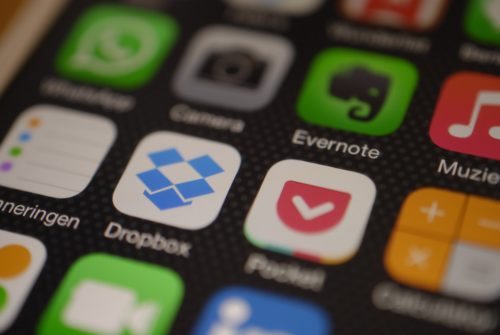
In 2002, Russian-born software developer Stepan Pachikov had an inspiration. He asked himself, “What if you could remember everything?” He theorized that human memory is fragile and unreliable. According to Pachikov, “memory and smartness are integrated.” The result of his quest was Evernote (a note taking app that can transform your productivity). Stepan was the founder and chief architect of the app that has found a home of the devices of more than 225 million registered users.
Using Evernote to organize your life and work
Evernote is powerful, and it is available on every platform. The possible applications are limitless. It can be a note taking app, a digital file cabinet, a read-it-later service, or a project management tool. With Evernote 10, the notes editor received significant updates making it a contender to be the place you write.
The power of Evernote is in capturing your information, organizing it, and being able to find it when you need it. For that reason, Evernote has invested heavily in the capture and search capabilities of the app.
Capturing information into Evernote is simple and straightforward. The company suggests eleven ways to save stuff into Evernote.
Search in Evernote is exceptional. Evernote’s mission is to help you find anything when you need it. You can search for everything – notes, notebooks, tags, and attachments. You can even search handwritten or typed text inside of photos.
Search will work on the web through a feature called “related results.”
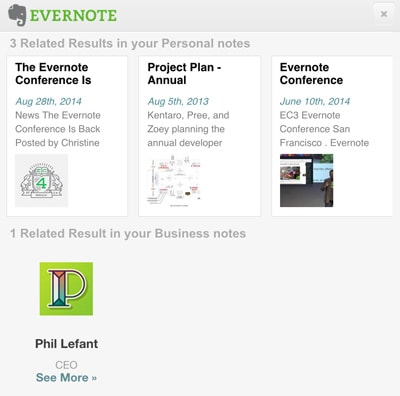
Related results are a feature of the Web Clipper that shows you content from your Evernote account right in your web browser (Chrome, Safari, Firefox, and Opera only). When you perform a search in Google, Yahoo!, Bing, or other search engines, Evernote presents related notes alongside your search engine results. If you’re an Evernote Business user, you’ll also see related results from business notebooks you have joined or that are in your business home.
It has been called an “everything bucket” because it a container for almost all types of digital notes. Here’s the problem, though: Evernote is a tool that can do almost ANYTHING, so it’s hard to know where to start and how to make the best use of it.
If you’re like most people, you struggle enough with trying to get everything done in the time that you have. The last thing you need is to have to figure out yet another note taking app.
You’re in luck: we’ve helped thousands of people with their productivity, and we’ve been heavy Evernote users since the beginning.
Here’s my very first Evernote note from August 2008:
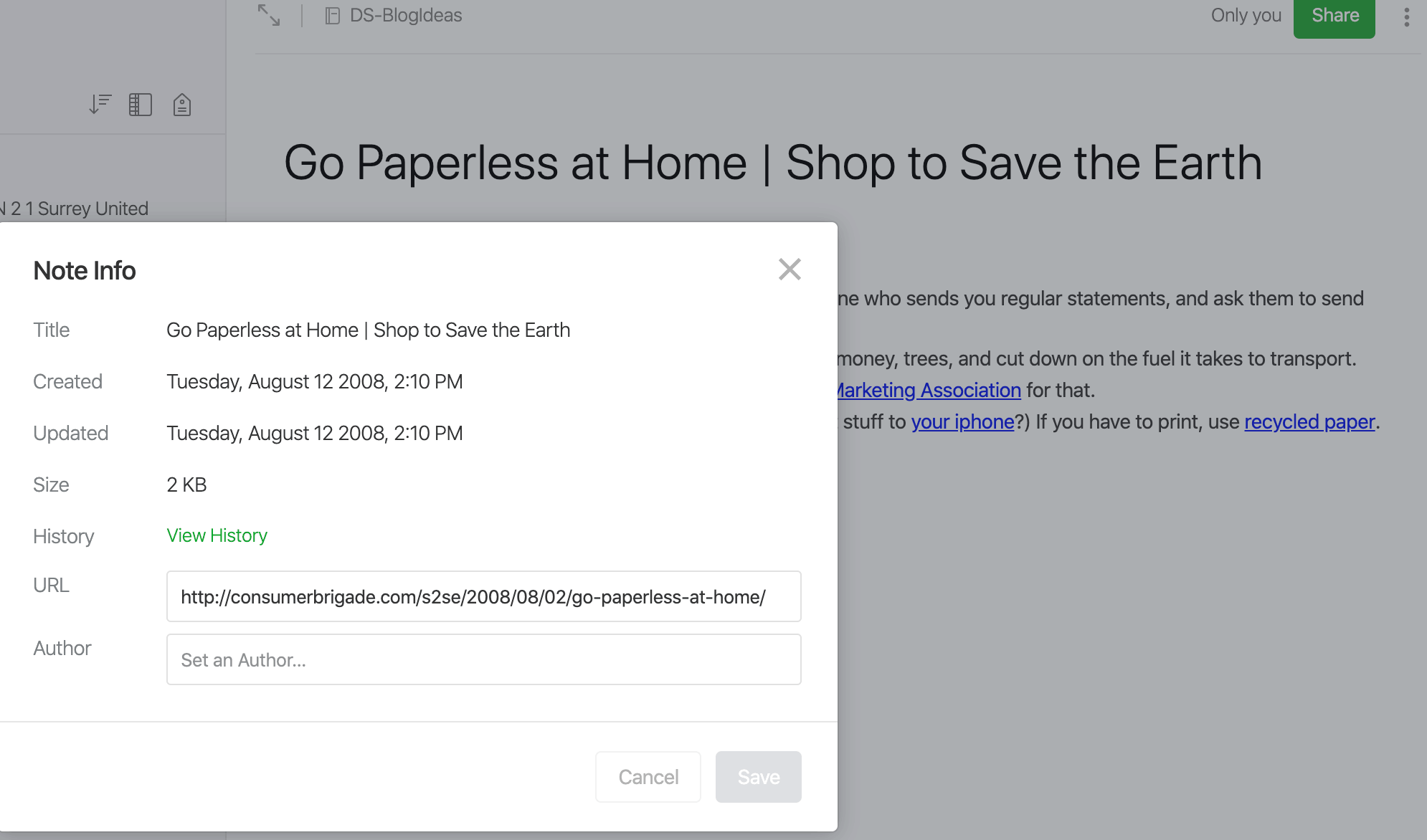
And here’s a picture I took from the very first Evernote conference in San Francisco in 2011. Some guy named Michael Hyatt was speaking on a tiny side stage in the same room they served food and drinks. Was anyone else there?
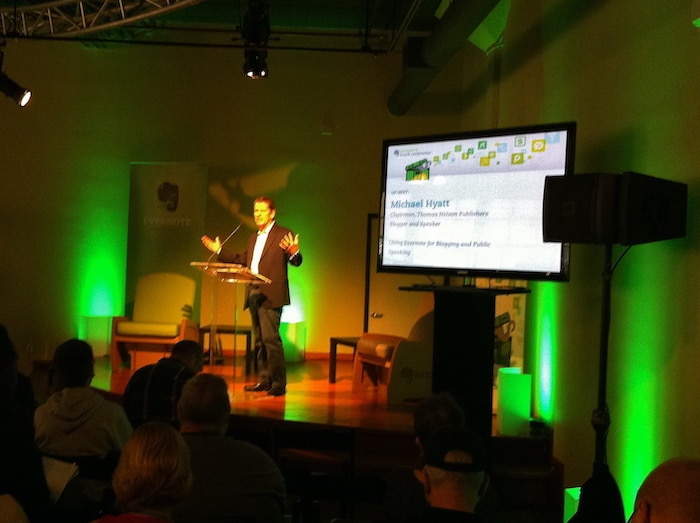
Over the years, we’ve written many articles and recorded many podcasts about Evernote. Here is a sample:
- 5 Tips to Work Smarter and More Effectively with Evernote (TPS141)
- An Evernote Consultant Reveals How She Uses The Tool To Manage Busy Life and Business (TPS268)
- How to use Omnifocus and Evernote Together
- The Future of Work w/ Andrew Sinkov of Evernote (TPS50)
- Agile Results and Evernote
Even better, we have a great Evernote training course in The Dojo, our popular productivity community, called The Ultimate Guide to Setting Up and Organizing Evernote.
In this article, I’m going to revisit how we use Evernote here at AE, and share some of our favorite Evernote tips — some you may not have tried before, even if you’ve been making notes for as long as we have.
Wait, isn’t Evernote dying?
Before we dive into it, it’s time to address the green elephant in the room.
A few years ago, Evernote went from tech press and blog darling to the subject of constant hot takes about how Evernote is doomed and in a “death spiral.”
There were hand-wringing blog articles and Youtube videos with titles like “R.I.P. Evernote.”
Competitors like OneNote, Bear, and Notion were proclaimed as “Evernote killers.”
While it is true that Evernote had a lot of management turnover, and the product went stagnant for a while, a funny thing happened: lots of users (ourselves included!) kept using, enjoying, and benefiting from Evernote.
We talked about this recently with friend-of-AE Francesco D’Alessio in our podcast TPS273 – Notion and Choosing The Right Productivity Tool For You.
So no, Evernote is not dying (as far as we are aware!), and it’s great to see they are improving again. The CEO recently released his 2020 Update: Our Progress and the Road Ahead report, and we appreciate things like their Behind the Scenes Youtube series.
How T0 Use Evernote
While Thanh and I have both been using Evernote since 2008, our use of Evernote has changed over the years. Here are our biggest use-cases now.
Clipping Web Research
Evernote still has the best web clipper, and in our opinion, it is their killer feature.
When I am doing research on a topic or come across something I want to capture, the web clipper is the tool I use.
There are lots of solutions out there for capturing links to things, but the Evernote Web Clipper that you install in your browser is unparalleled for not just capturing a link to something, but a cleaned-up capture of the content.
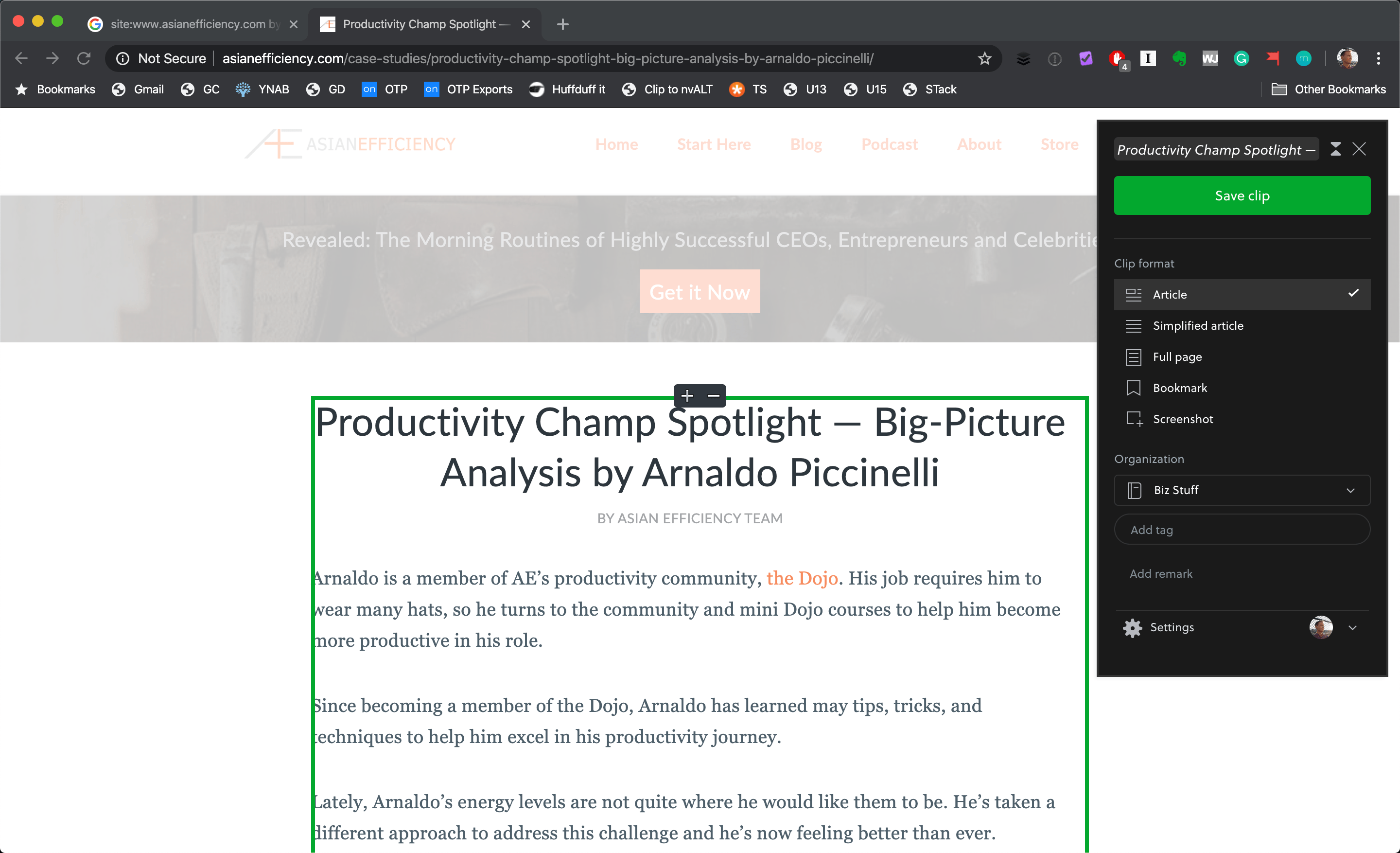
Book and Conference Notes
Both Thanh and I use Evernote to capture notes from books that we read and conferences we attend.
I don’t usually take notes in Evernote, but it is where they end up, ready to be accessed and reviewed.
For example, here is an example of book notes I captured from James Clear’s Atomic Habits.
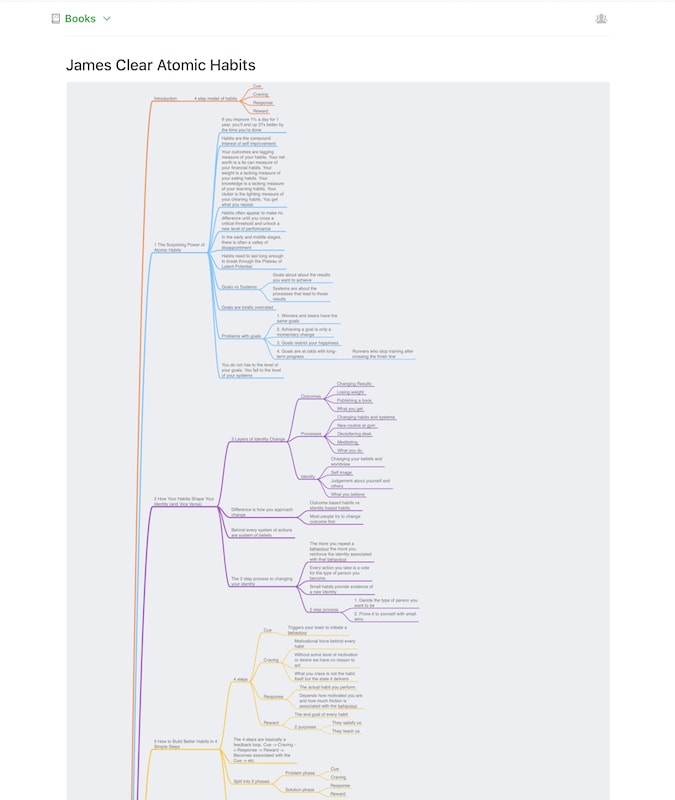
(You can hear our interview with James in this popular podcast episode.)
I have a series of OmniFocus tasks to go back and review these notes over three days to four years, and the tasks have a link straight to the Evernote note.

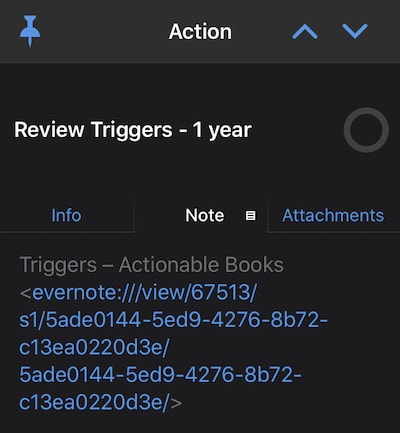
We described this process thoroughly in TPS245 We Were Tired of Forgetting The Books We Read — So We Use This System.
I do something similar for note taking at conferences. Here’s an example of notes I have stored in Evernote:
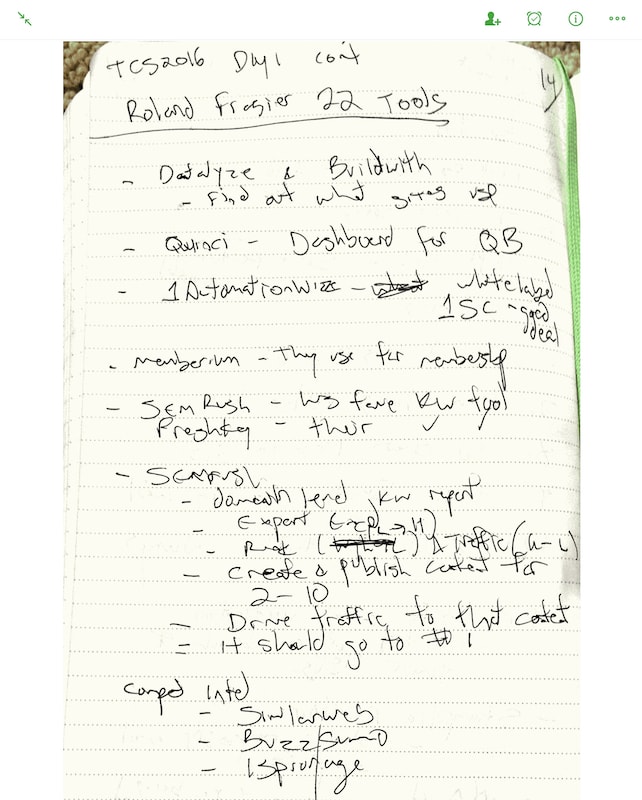
I described this in TPS225 How to Get the Most Value Out of Conferences and Implement What You’ve Learned.
This use case is an example of one of the benefits of a tool like Evernote: it is effortless to get information in, and it is easy to access that information, even from other apps.
Recipe Notes
I am in no way shape or form an expert cook, as my kids would attest.
However, occasionally I have recipes or food ideas that I come across online, and I capture them as notes for later reference.
I bring this up to highlight a benefit of Evernote, which lets you capture the content of a web page, vs. other tools that just capture a link.
Here’s an example of what I mean:
Every Christmas, my usefulness has traditionally been limited to family tech support. I’m fixing someone’s iPhone, computer, printer, or Smart TV and getting something or other to work.
However, back in 2012, I somehow got it into my head to make a trifle for dessert, and since most of my family is vegan, I found a recipe for a (very yummy) vegan trifle online and clipped it to Evernote. I’ve made it almost every year since.

This year, I went to make it and decided to go to the website to see if there were any changes to the site.
To my surprise, the entire site is gone!
Thankfully, Evernote came to the rescue. Since I had the page in my notes, it was not a problem — the content of the recipe was in Evernote, and my father did not disown me.
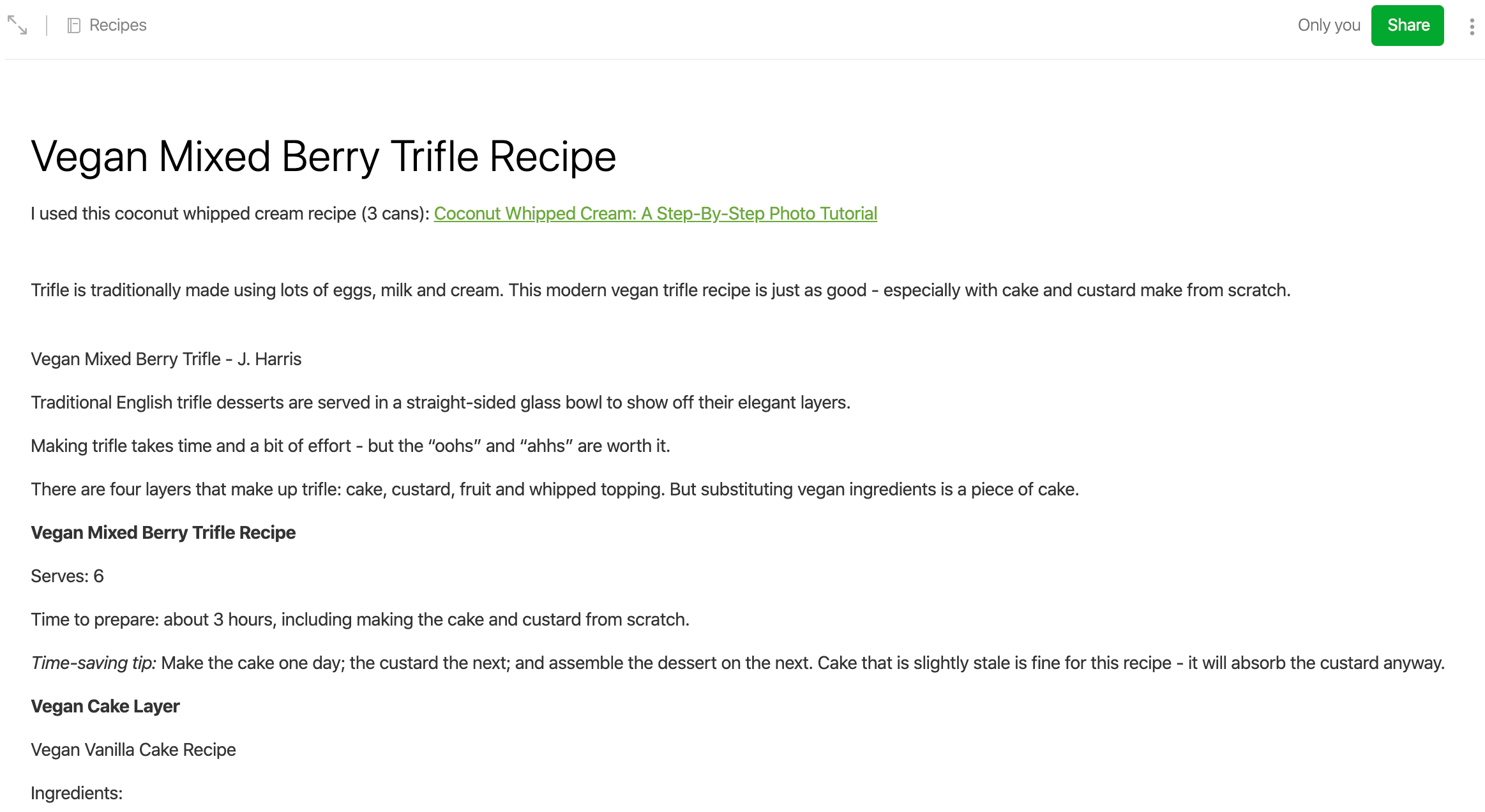
Other useful notes
Here are some other things we use Evernote for:
- Trip information: Flight bookings, reservations, etc. are captured to Evernote, so they’re ready and searchable when needed
- Receipts: When traveling, receipts get captured to Evernote and are accessible by a bookkeeper
- Body measurements: Thanh captures body measurements there to track fitness goals, and this also comes in handy for clothing sizing.
- Marketing swipe file: When you run a business or work in marketing, you see good ideas everywhere. Evernote makes it easy to capture and use for inspiration later.
Our Top 6 Tips on How to Use Evernote
Now that you’ve seen some of the ways that we use Evernote, here are some of our tips to become an Evernote ninja yourself.
1 – Don’t Overthink Your Notes
Here’s where many people get hung up with Evernote: they spend way, way too much time thinking about and messing around with organization structure.
We get it: a big fear when using a tool like this is that you won’t be able to find the information that you put into it.
While that fear comes from a reasonable place, what usually happens is we start trying to set up a well-thought-out, functional organizational structure, and we end up with one that is fiddly and complex.
Our advice on how to use Evernote? Keep things as simple as possible.
Start with a notebook called Inbox and make that your default. Most of the time, capture information to that notebook, and then you can move the notes later.
Where it makes sense, create a few high-level notebooks. For example, you might have notebooks for Travel, or Clients, or different businesses or organizations.
As a general rule, the fewer notebooks the better. How is this possible? Evernote has powerful and functional search capabilities. Once you get used to typing a few words from the name or content of your notes, you’ll zoom right there. You’ll find that big structures with Stacks and Tags all over the place usually aren’t needed.
2 – Create A Project or Topic Dashboard Note
When you start to capture a lot of information to Evernote, you might feel that you don’t have a clear sense of where things are, or you want easy access to specific notes.
There’s a woefully-underused feature of Evernote called Note links, where you can link different notes together.
This feature lends itself to using Evernote as a Personal Knowledge Base (PKB) or for implementing the Zettelkasten method. Zettelkasten (German “slip box”) is a method of linking together pieces of information that were collected individually. It is often used in research, but can be useful for any knowledge worker. Your collection of notes and attachments will grow over time. PKB and Zettelkasten are ways to create useful connections of everything you have stored in your notes.
A good use-case for this is a project dashboard. You could have one note that is a “hub” for other notes that are related to a specific project. You can keep track of reference material, project research, and have one-click access to everything in your notes.
Here’s a Pro-Tip: You can select a group of notes, and a button will appear called Create Table of Contents Note.
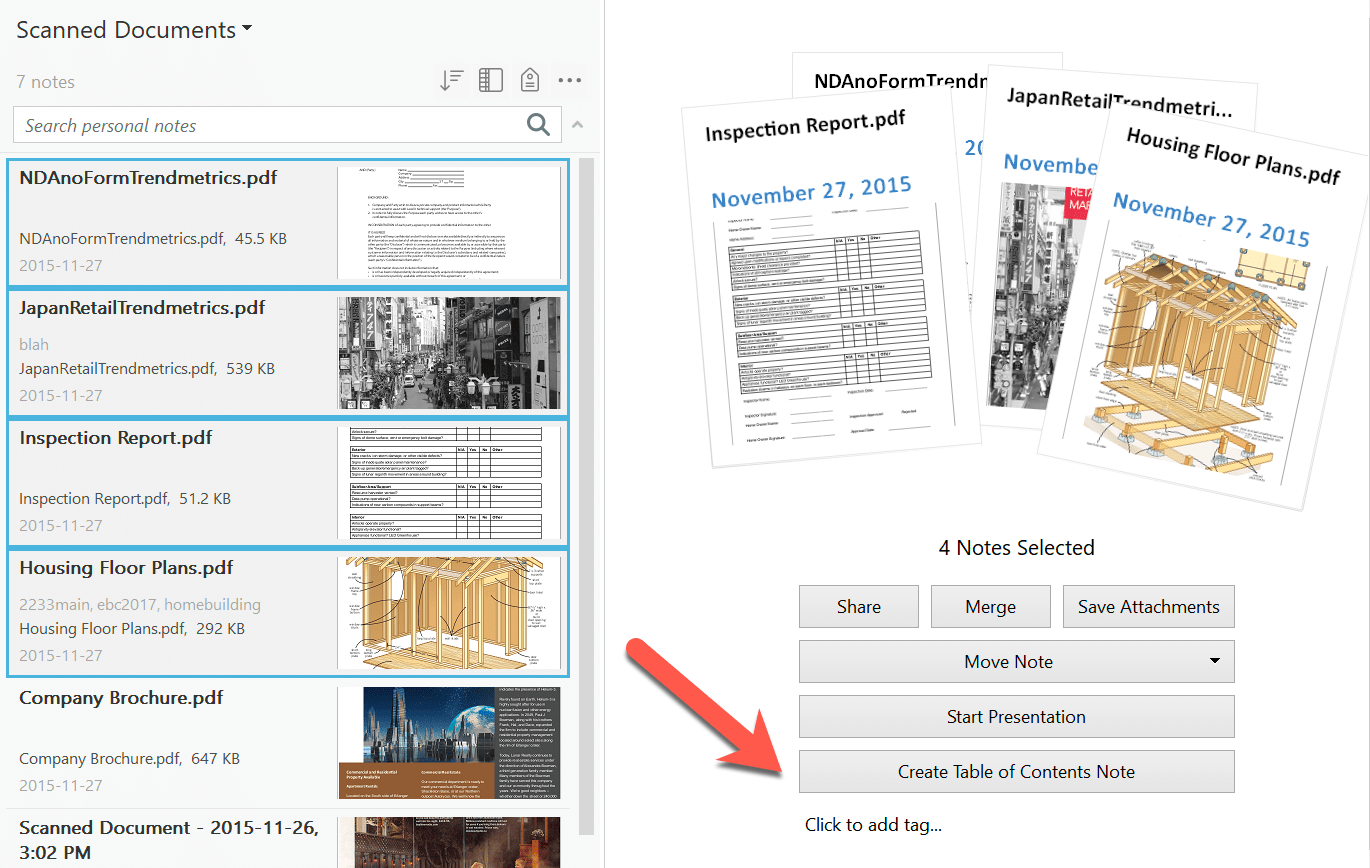
Click that and boom — you have an automatically created dashboard with note links to each one.
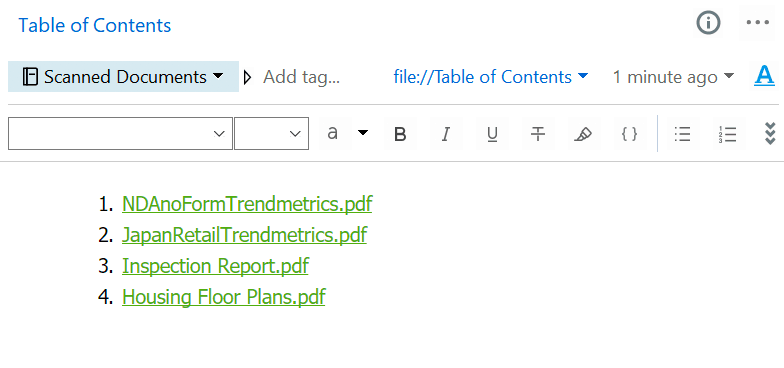
3 – Use Evernote Note Templates
If you’re an old-school Evernote user, this might be a feature that you’re not aware of, or if you are, you may not have checked out for quite some time.
The concept of templates isn’t new, but the way you had to do it before was pretty hack-y. You’d have a note that you wanted to re-produce, then maybe you’d have a “Templates” notebook, and perhaps you’d give the notebook a weird name like !Templates so that it is near the top of the list. Then you’d just copy your note every time.
About a year ago, Evernote brought templates into the product and even created a built-in Template Gallery.
There are over 50 built-in templates grouped in collections called “For Life,” “For School,” and “For Work,” and organized in categories like Meetings, Project Management, and Travel. There’s even a branded Getting Things Done category with Individual Project and Weekly Review templates.
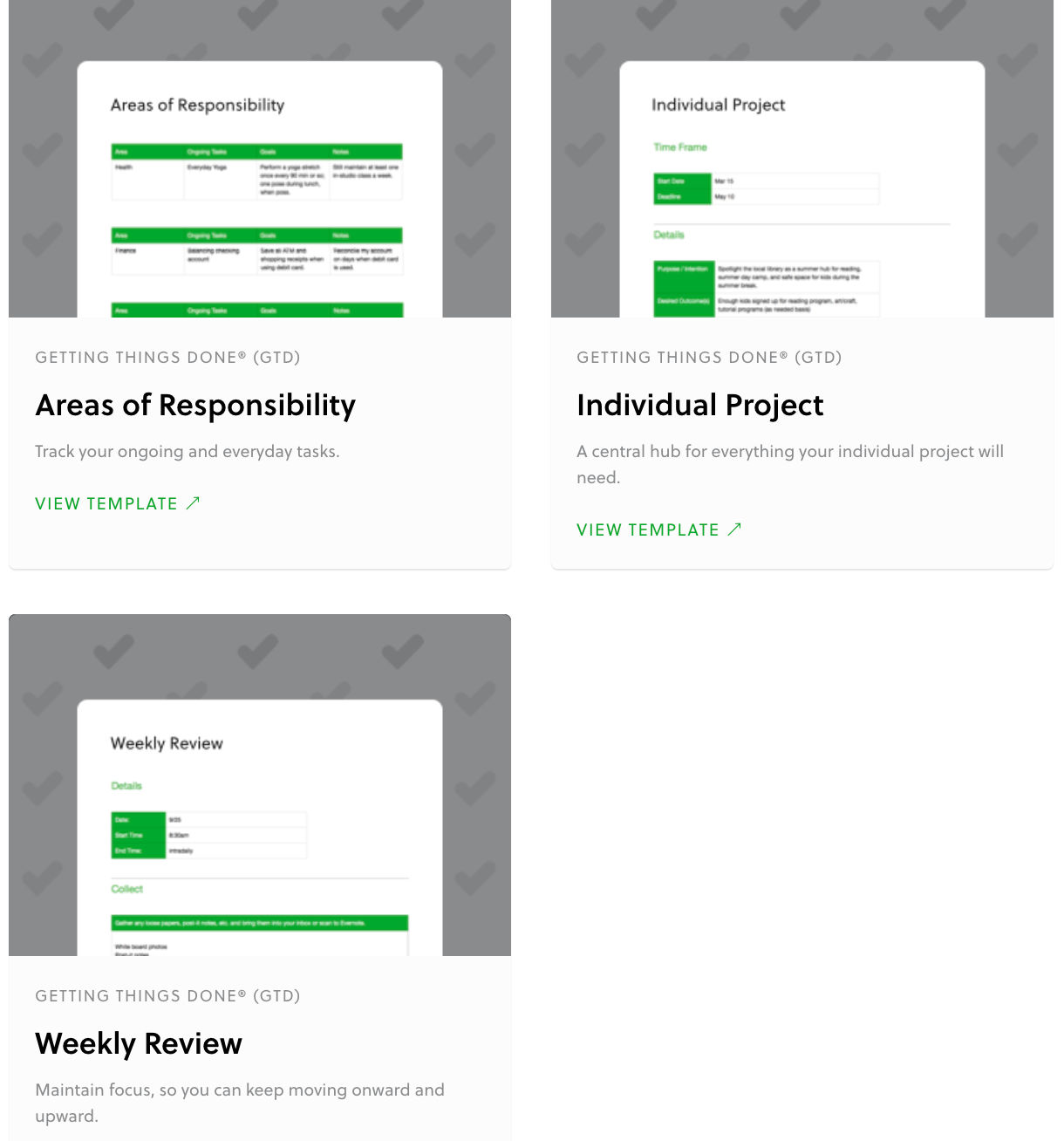
Here are some useful examples of notes templates:
- Habit Tracker
- Yearly Goals
- Daily Planner Notes
- Focus & Energy Tracker
- Gratitude Journal
- Meeting notes
You can click here to view the entire Evernote templates gallery.
Free users can use the built-in templates, and Premium users can save their own.
To use a template, just start a note and click the Templates button.
4 – Use the Evernote Web Clipper with Gmail
I’ve mentioned in this article that the web clipper is an awesome way to capture reference material.
It has one extra super-power: it has tailored abilities for particular websites, and Gmail is one of them.
If you’re a user of the Gmail web interface, you may or may not have noticed that each message has its own URL. Because of that, the Evernote Web Clipper is a perfect way to capture reference material and get it out of your inbox.
If you’re clipping a conversation, you can choose which messages in the thread you want to clip. Sometimes you just want the original and not the rest. Instead of capturing an entire thread, you can pick and choose.
In our Asian Efficiency Email Workflow, we say that a big part of taking control of your email is getting actionable and reference material out of your inbox to a more appropriate place.
The Evernote Web Clipper is a great way to do that.
5 – Use the Jump Command to Find Your Notes
As we wrote in 5 Ways to Automate Technology and Save Time, you know that we love our keyboard shortcuts. They just make everything faster and more productive.
It is always delightful when a developer adds a keyboard command that makes using the whole app faster and easier, and Evernote has done that with keyboard shortcuts in the Mac and Windows interface.
- On Windows, hit Ctrl-Q (for Quick Search)
- On the Mac, hit ⌘-J (for Jump)
These commands are a lightning-fast way to navigate anywhere in your notes.
Type ⌘-J or Ctrl-Q, type in a Notebook or a Tag, and you’ll jump right there.
Once you get used to navigating your notes, you’ll never go back to mousing around the interface.
6 – Use Your Voice on iOS to Quickly Capture a New Note
Awesome Dojo Lifetime member Giacomo put together a fantastic Siri Shortcut and shared it in an article:
How to capture ideas before they’re gone forever with iOS Shortcuts!
Once you install it, you just need to say out loud “Add Content to Evernote,” and it will capture whatever is on your mind to Evernote.
This is a great example of Evernote’s integration ability and how there is a never-ending ability to quickly get things out of your mind and into a trusted system.
So Where Do I Start?
In this article, I’ve shared several ways that we use Evernote here at AE, and some of our favorite tips for getting the most out of our notes. How do you get started?
The key is not to try to implement everything at once. Just pick one tip, master it for a while, and then move on to the next.
For example, let’s say you decide to start with templates. There are 50 note templates in the example gallery. Don’t try to implement a bunch at once. Just start using one, maybe customize it, and go from there. You’ll be an Evernote star in no time.
If you have a favorite Evernote tip or strategy, leave it in the comments or send it in on social media. Perhaps we’ll share it in a future article or podcast.

Brooks, you and Thanh providEd great tips on using Evernote. The best one for me was, “Don’t overthink it! “ This needs to be my mantra!
Great article and podcast!
I just checked – my first Evernote note was created on August 2, 2008 – I have you beat by 10 days! :)
I learned so much about Evernote while listening to this podcast today. I want to look more at setting up templates and using the jump command. So I cut clipped this post into Evernote. :)